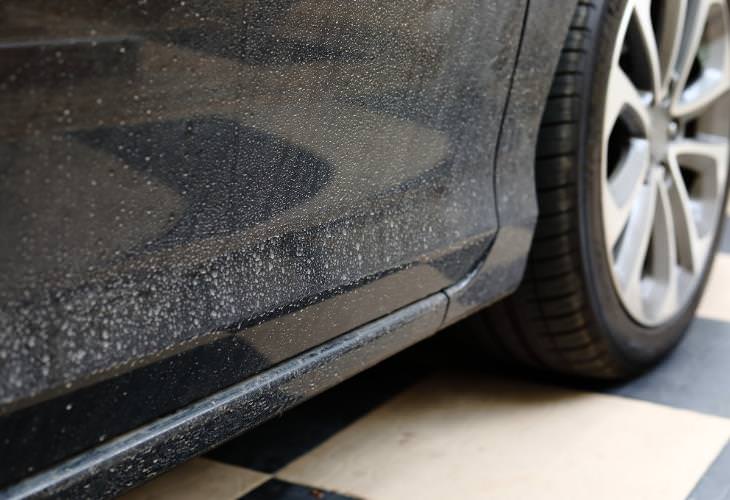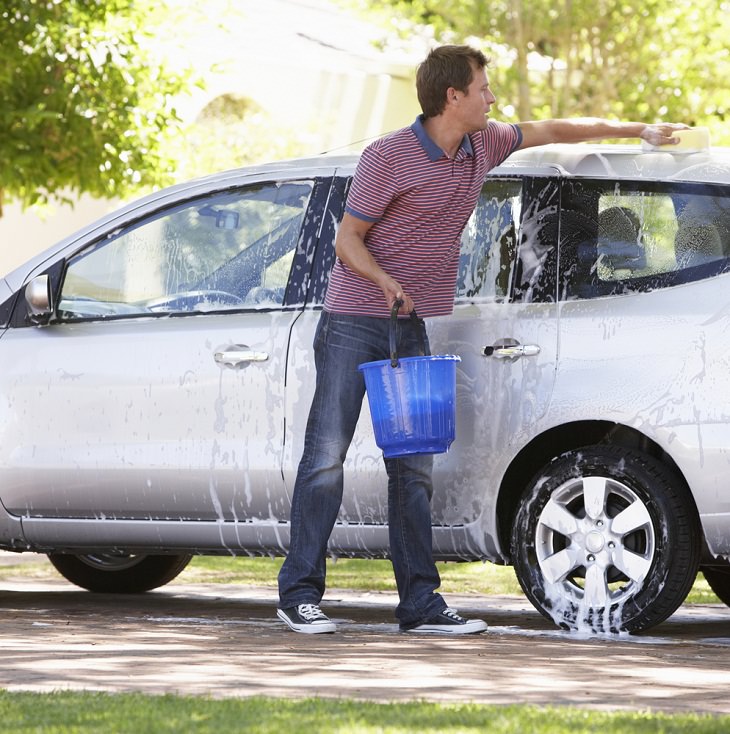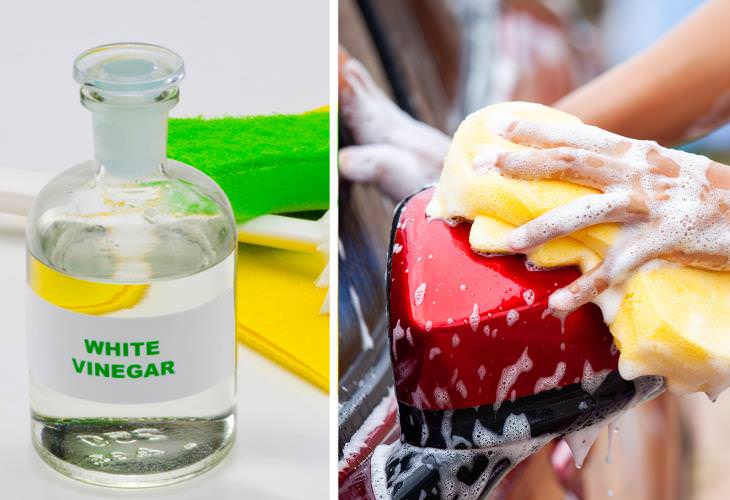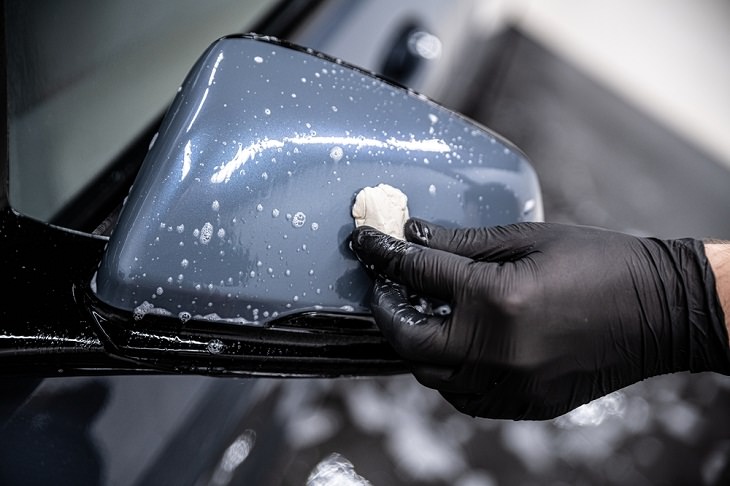Types of Car Water Stains
Water generally comes in contact with your car in three ways: overspray, rain, or when you wash your car.
You might be wondering, 'Why would the same water you use to wash your car cause stains on the vehicle’s surface?' That’s because all water contains minerals. Hard water, in particular, contains more minerals. When the water droplets from your car evaporate, they leave behind traces that lead to stubborn spots on the surface.
Sometimes, traces of minerals, salts, and acids in hard water can get stuck on the surface of the car and leave behind hard deposits. If not removed properly, these deposits can cling to your car’s paint and erode its clear protective coating.
See Also: Here's How to Clean Hard-to-Reach Spots In Your Car & Home
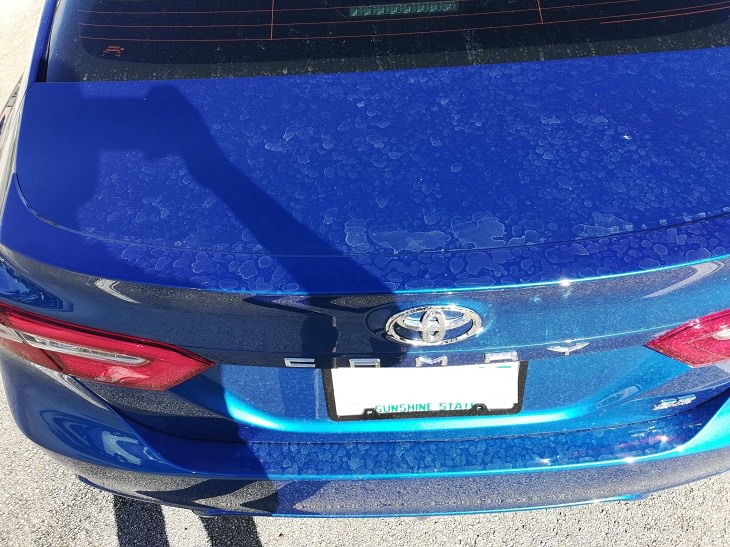
Image credit: Reddit
Rainwater(which is always acidic to some degree) and the acids from all sorts of air pollutants can also cause water spots or limescale. These hard chalk-like deposits can be pretty hard to remove with a simple wash.
The longer you allow these water stains to linger on your car, the more difficult they will be to clean. Thankfully, there are a few simple ways to remove them.
3 Simple Ways to Remove Water Stains From Your Car
1. Start with a Thorough Wash
Let’s start with the most straightforward method: give your car a thorough wash and dry. However, you may ask us, 'If it was the wash that caused water stains in the first place, why bother doing it again?' Well, that’s because you will have to clean the vehicle properly to remove water stains from your car, no matter what. It helps wash away most of the particles that can scratch the surface when you try and get rid of the stains.
A two-bucket wash (one bucket with your car shampoo and another with plain water for rinsing your wash mitt) is recommended, as that will help loosen up any dried-on sediments and rinse them off.
You can even buy a few gallons of distilled water from your grocery store and use it for a final rinse. Distilled water has no minerals and won’t cause any sediment build-up later on.
Before you begin the wash, however, remember that evaporation causes water spots on the car. So, immediately start drying the vehicle from the top-down. Use microfiber cloths for the best results.
2. Give Your Car a Vinegar Bath
When you’re done washing your vehicle, use a vinegar solution to wash your car. Vinegar can be used to remove grease, grime, dirt, and other debris from various surfaces. It is also effective at erasing water spots from your car.
White vinegar is a low pH form of acetic acid and works great to remove hard water spots. Since it's mildly acidic, it works well for magnesium, calcium, and alkaline deposits. Here's a step-by-step guide:
* Mix equal amounts of distilled water and vinegar in a spray bottle and use it to soak a clean sponge.
* Spray the mixture across the surface of the car and pour the remaining solution into a bucket.
* Now, use the sponge over the area that needs to be cleaned.
* Let it sit for a couple of minutes, and then scrub away the water stains.
* Do not aggressively rub the spot, as this may lead to scratches. Be gentle.
* Rinse the area with clean water from a hose.
3. Use Detailing Clay
After using both of the methods we mentioned above, you may still need to use detailing clay to eliminate any remaining water stains. Detailing clay comes in small bars, and it can be molded and used as an eraser. It is effective at removing stubborn sediments left on the car’s surface like metal fragments, ash, dust, and other particle pollutants because it can fleece off the mineral residue by force. Since it can be kneaded into any shape you want, you can use the detailing clay to clean smaller, localized sections of water spots. Here are a few tips:
* Use the clay with a spray lubricant that is included with the product.
* Gently move the detailing clay over the areas you want to clean. Rub the clay back and forth with light to medium pressure.
* Work on each spot from multiple angles. Keep rubbing until all the stains are gone.
* Wipe the clay lubricant residue off with a soft microfiber towel. You should see a distinct difference almost immediately.
Tip: Keep checking the clay bar from time to time for hard particles. Pick them out whenever you find one.
The Bottom Line
As annoying as water spots are, you can’t completely avoid them. Luckily, dealing with them isn’t that hard, as we hope we already proved to you. Just keep an eye out for any new spots and keep following these steps frequently to maintain a spotless car.
Share these tips with other car owners you know!

